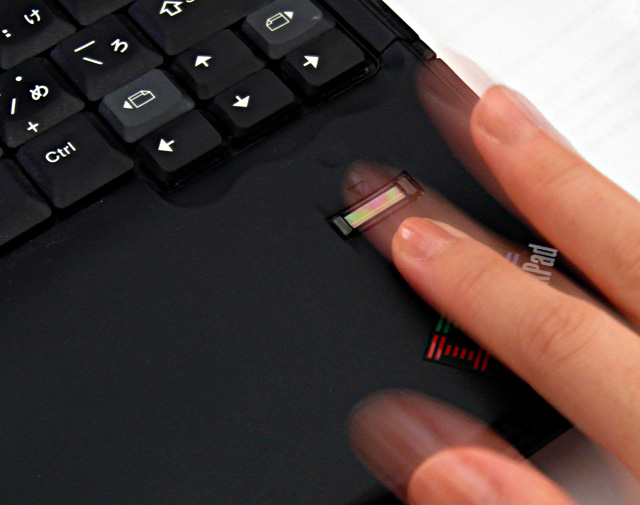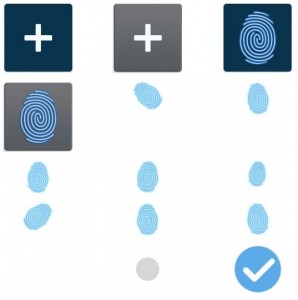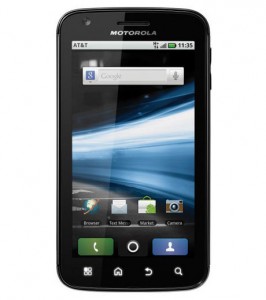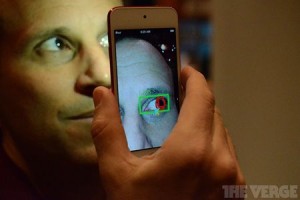 Over the last few years we have seen on some Windows laptops, biometric sensors that recognize fingerprints. But if we are to judge by the forums users frequently have problems and more often than not they disable recognition. Will it be any different for smartphones companies who are attempting similar biometric checks? There is certainly a need to protect user privacy as more and more personal data associated with our lives is stored on our phones. Before smartphones, this type of information was stored in different places, often in analog form now our financial transaction, email, photographs and diary are concentrated in one device.
Over the last few years we have seen on some Windows laptops, biometric sensors that recognize fingerprints. But if we are to judge by the forums users frequently have problems and more often than not they disable recognition. Will it be any different for smartphones companies who are attempting similar biometric checks? There is certainly a need to protect user privacy as more and more personal data associated with our lives is stored on our phones. Before smartphones, this type of information was stored in different places, often in analog form now our financial transaction, email, photographs and diary are concentrated in one device.
That is why biometric identification might be a good way to protect these data. The advantage of using a biometric security is to guarantee that only the user can access the smartphone. Moreover, the user will not have to remember a complicated combination of words or numbers in order to use the phone, making it far more difficult for a malicious user to access the terminal. In addition, it could also be a quick means of payment via one’s : in a contactless payment for example, it would be enough to put the user’s thumb on the screen to confirm the transaction rather than enter the traditional PIN whose limits are known.
One of the first smartphones to use this kind of technology was the Motorola ATRIX. With its captor on the back of the device you could better secure your data with your fingerprint. Jeremy Marks of the company Spymaster, the leading professional suppliers of security, told the New York Times: « Biometric security is the best way to protect your device. » So this technology had been already done once even if it is pretty new. ATRIX was a pioneer.
 This technology is gaining interest from industry giants such as Apple or Samsung. Last year Apple acquired a firm specialized in biometrics (AuthenTec) for 365 million dollars in order to integrate this innovation to the iPhone 6 according to the rumors. Apple has decided to integrate this technology into the home button of the smartphone making it a touch button.
This technology is gaining interest from industry giants such as Apple or Samsung. Last year Apple acquired a firm specialized in biometrics (AuthenTec) for 365 million dollars in order to integrate this innovation to the iPhone 6 according to the rumors. Apple has decided to integrate this technology into the home button of the smartphone making it a touch button.
On the other hand, the SamMobile site has discovered a series of images (on the right here) that strongly suggest that Samsung’s is also interested in fingerprint recognition.
The site speculates that this technology should be integrated into the home button for a future smartphone, like Apple.
We have to remember that biometric recognition in smartphones is not restricted to fingerprints. There is also facial recognition with or without facial expressions, voice recognition and even iris scanning. Take the EyeVerify application, this company has demonstrated its Eyeprint technology, a system for scanning the veins present in the eye of the user enable access to a smartphone or an application on the phone. The application uses the camera and flash on a smartphone to take several shots of the eye of the user.
Once the images are taken, Eyeprint enters a verification phase. In order to make the system work the user is required to gaze to the left and to the right to fully show the veins that run through the eyeball that are unique individual characteristics. These veins are read like a route map and if they correspond the user can unlock the device and provide access to certain applications.
A Beta program was launched in March to allow developers to include this technology in various applications. EyeVerify already working with several manufacturers to include a biometric recognition module in various smartphones and other devices with cameras.
Nevertheless biometrics are far from foolproof and in general recieve rather bad press from security specialists. Indeed, a biometric approach like fingerprint recognition has two weakness : first and foremost our fingerprints are public. This aspect of our physical identity is accessible to all : a simple reprodution can fool most of the OCR systems, and we leave our fingerprints on everything we touch. The other problem is that unlike a password, unless you undergo surgery, it is impossible to change your physical characteristics, which could be quite a dilemma if your identity was compromised. In the future it may be impossible for you to prove you are who you say if someone has already recorded their biometric data in your place. In the U.S., identity theft is a real problem, and causes not only financial hardship but also severe psychological distress to victims. Biometric information on your phone however may be more secure than on say your passport where it is integrated into the cover and designed to be read at a short distance by an NFC reader. The irony is that if it can be read it can also be duplicated!
So where does that leave us? It seems that biometrics are going to be integrated in some ways to our smartphones, it remains to be seen whether they will be safe, secure and effective or complicated, vulnerable and quickly abandoned.
More information here :
- http://www.forbes.com/sites/tarunwadhwa/2013/03/29/why-your-next-phone-will-include-fingerprint-facial-and-voice-recognition/
- http://hothardware.com/News/Future-Generation-Smartphone-Tech-To-Include-Biometric-Security/
- http://edition.cnn.com/2013/02/21/tech/mobile/smartphone-developments-mobile-strategy
- http://appleinsider.com/articles/09/03/27/apple_developing_stealth_biometric_security_for_iphone.html
- http://www.zdnet.fr/actualites/samsung-pourrait-egalement-proposer-la-reconnaissance-d-empreintes-39790567.htm
- http://www.generation-nt.com/eyeverify-reconnaissance-oculaire-pour-smartphones-actualite-1698652.html


